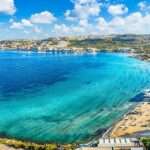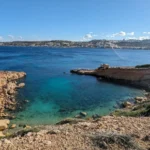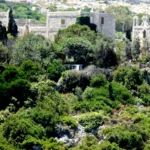Explore the golden sands, safe shallow waters, and vibrant family beach vibe of Mellieħa Bay (Malta) — the island’s largest sandy beach.
Category: Malta
Beach Post Ta l-Imgharqa in Ghadira
Malta’s hidden WWII Beach Post at Ta’ l-Imgharqa and the tranquil Wall Stone Beach near Għadira — where history meets untouched beauty.
Girgenti – Malta
Girgenti Malta a serene valley of history, nature, and wine, home to the elegant 17th-century Girgenti Palace and peaceful countryside.
Comet C/2023 A3 over Malta
A rare comet, C/2023 A3 (Tsuchinshan–ATLAS), graced Malta’s skies in 2025, offering stunning views, a reminder to protect our dark night skies.
Top 10 Hiking & Walking Trails in Malta
Malta’s top 10 hiking trails — from Mellieħa’s cliffs to coastal loops and heritage walks across the island.
Calamari in Malta – Fishing & Recipe
Malta calamari fishing season, fishing secrets, fishing locations and the traditional stuffed calamari recipe loved by locals.
Family Excursions in Malta
Whether you’re seeking relaxation, adventure, or cultural exploration, Bluewaves Watersports offers the best family excursions in Malta.
Catacombs in Malta
Malta’s ancient catacombs, underground tombs and rituals revealing Roman, Jewish, and Christian history beneath the islands.
Blue Lagoon in October
The beauty of Blue Lagoon in October, warm seas, lighter crowds, scenic boat trips and direct ferry or self-drive boat options.
Tuna Fishing in Malta
Malta’s tuna fishing and fish farm industry, its economic importance, and the balance between growth and sustainability.












